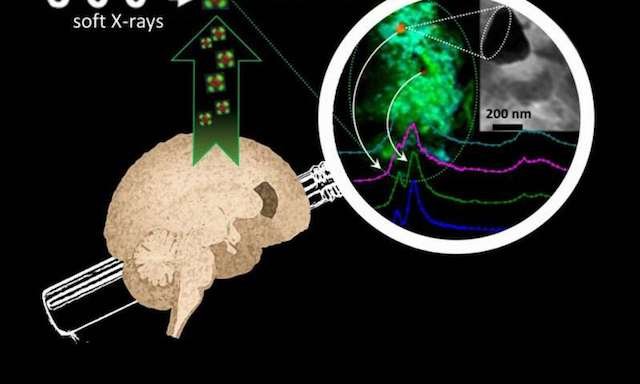
In a recent international study, scientists find properties of the metals in the brain involved in the progression of Alzheimer’s disease.
They find iron species are linked to the formation of amyloid protein plaques in the human brain—abnormal clusters of proteins in the brain.
The formation of these plaques is linked to toxicity which causes cell and tissue death, leading to mental deterioration in Alzheimer’s patients.
The finding could help develop better treatment of the disease.
There is no cure for Alzheimer’s disease or any other type of dementia.
Delaying the onset of dementia by five years would halve the number of deaths from the condition, saving 30,000 lives a year.
In the study, the researchers extracted amyloid plaque cores from two deceased patients who had a formal diagnosis of Alzheimer’s.
They scanned the plaque cores using state-of-the-art X-ray microscopy at the Advanced Light Source in Berkeley, USA and at beamline I08 at the Diamond Light Source synchrotron in Oxfordshire.
The tech helped them determine the chemical properties of the minerals within them.
They found that that in brains affected by Alzheimer’s, several chemically-reduced iron species including a proliferation of a magnetic iron oxide called magnetite occur in the amyloid protein plaques.
They also made unique observations about the forms of calcium minerals present in the amyloid plaques.
The researchers suggest that iron is an essential element in the brain, so it is critical to understand how its management is affected in Alzheimer’s disease.
Advanced X-ray techniques in this study have delivered a step-change in the level of information about iron chemistry in the amyloid plaques.
The research team propose that interactions between iron and amyloid that produce the chemically reduced iron species, including magnetite, may account for toxicity that contributes to the development and progression of Alzheimer’s.
The team is led by an EPSRC-funded collaboration between University of Warwick and Keele University.
It includes researchers from University of Florida and The University of Texas at San Antonio.
Dr. Joanna Collingwood, from Warwick’s School of Engineering of the University of Warwick, was part of a research team.
The study is published in Nanoscale.
Copyright © 2018 Knowridge Science Report. All rights reserved.
Follow Knowridge Science Report on Facebook and Twitter.
Figure legend: This Knowridge.com image is credited to University of Warwick/Dr Joanna Collingwood.
Journal reference: James Everett et al, Nanoscale synchrotron X-ray speciation of iron and calcium compounds in amyloid plaque cores from Alzheimer’s disease subjects, Nanoscale (2018). DOI: 10.1039/C7NR06794A



